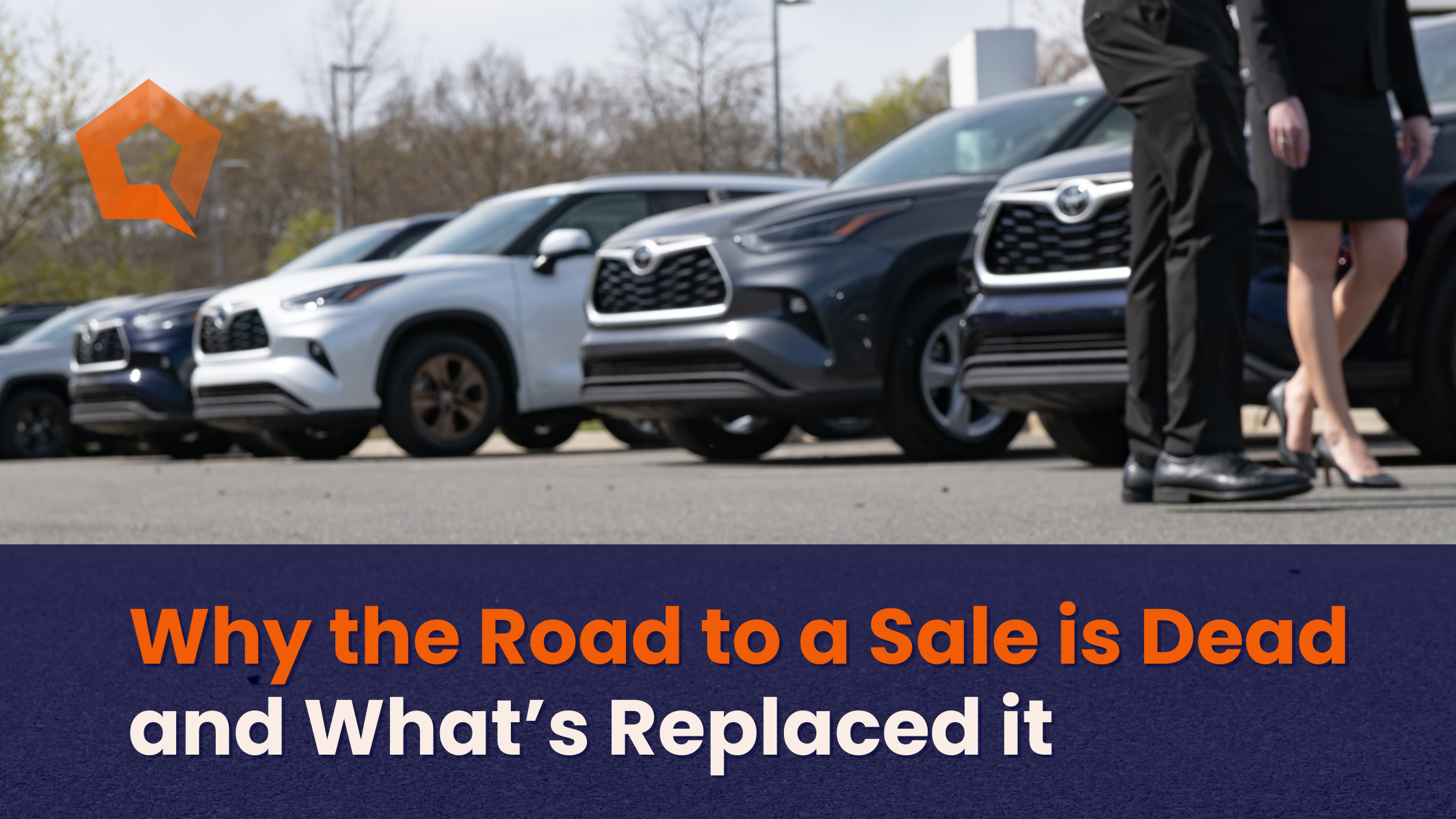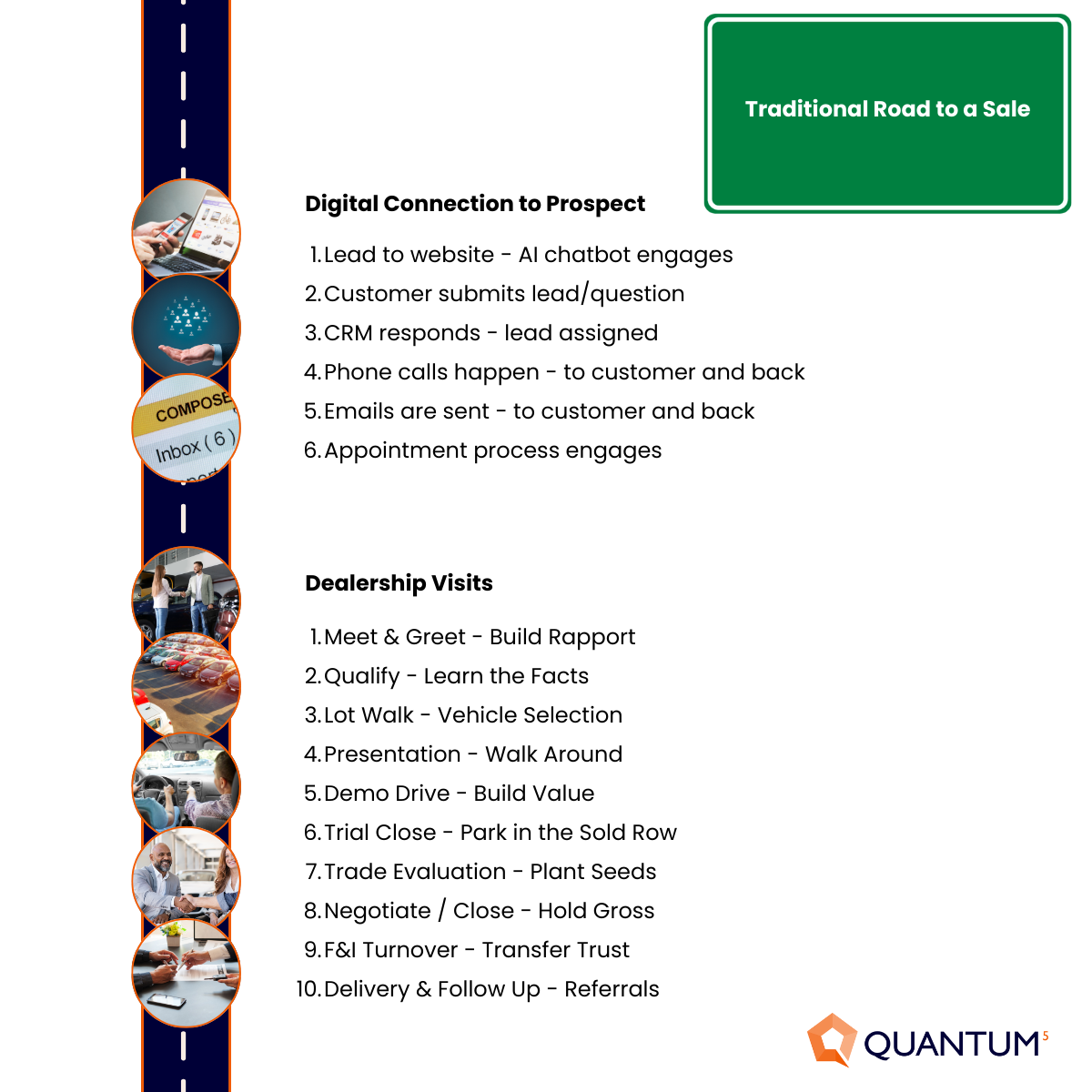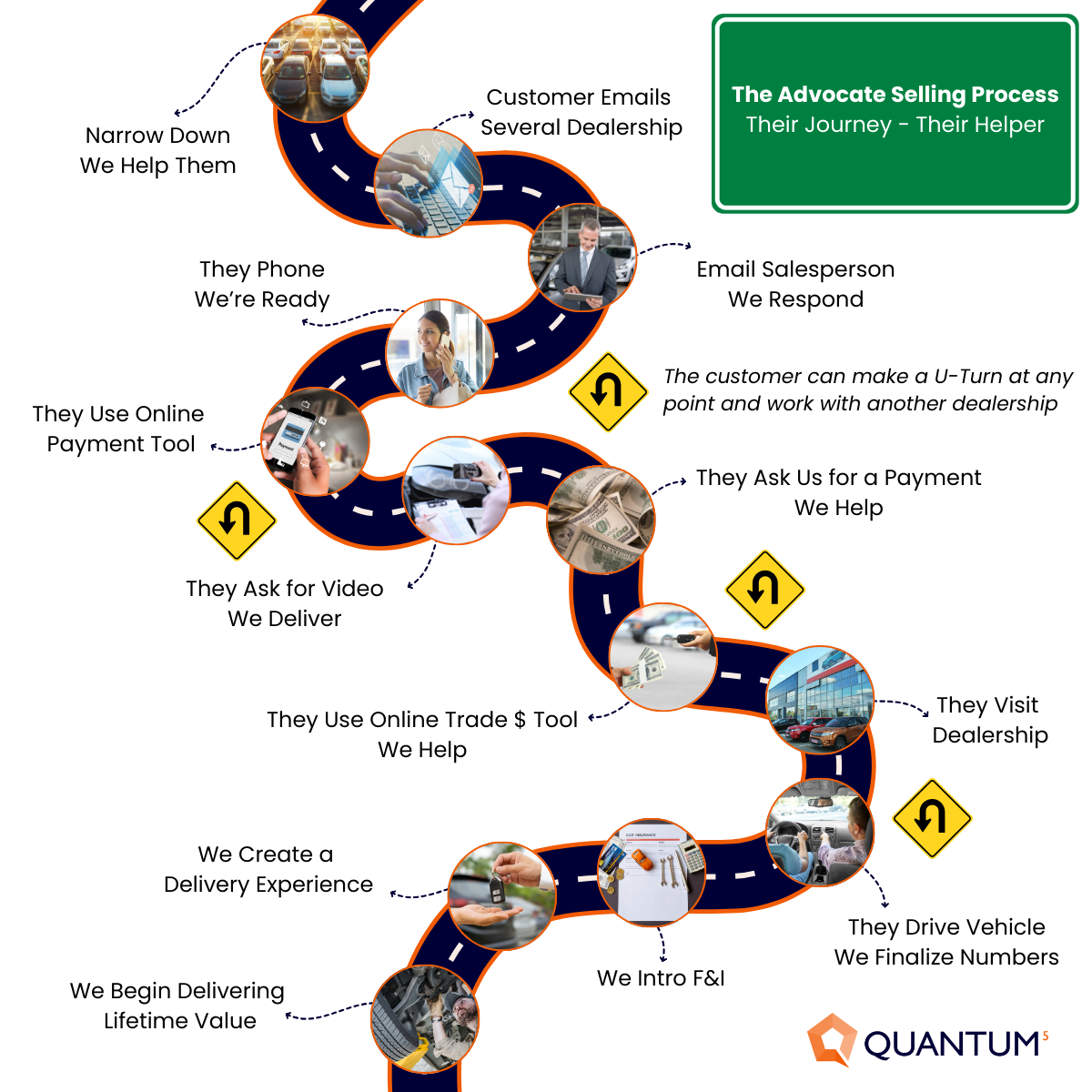Meet the Team: Ben Coppel
Having worked in many roles across automotive, Ben thrives when helping dealerships and their teams achieve success through customer-centric...
The Road to the Sale is dead. It’s been dead for more than 15 years. A car sale has shifted from sales-centric to service-centric. Learn why in this post.

The Road to the Sale is dead. Period. And, honestly, it’s been dead for more than 15 years. A car sale has shifted from sales-centric to service-centric. And for good reason.
The salesperson has been aware of it for years, of course. But some sales managers have been slow to catch up, sometimes to the detriment of their dealership’s customers. Learn why and see what's replaced it in this post.
What is the Road to a Sale?
Firstly, what is the Road to the Sale (also referred to as Road to a Sale) for those who are unfamiliar? In the automotive industry, it was a prescriptive 10-step program. Salespeople had to control all aspects of their customer’s buying journey. This moved from start to finish. If they didn’t, they’d likely hear negative feedback from their sales manager. They’d hear they skipped a step or needed to “get control of their customer” in order to get those car sales.
About 15 years ago, the potential customer gained the ability to submit inquiries about specific car sales on dealership websites. That was the beginning of the end of the RTAS. This helped to put the customer in control, bucking the conventional salesperson-led process that was previously in place.

The market evolution – it’s their buying journey
Although customers were submitting leads online about specific cars, dealers were still asking people to immediately come in and follow their prescriptive 10 step process. Customers began showing dealers that they didn’t like this rigid process and started to shop around, comparing prices, in-stock inventory, etc.
Buyers began to design their own buying journey (and have done so for nearly everything they buy). Customers are accustomed to malleable buying journeys after 25+ years of technological experience which has shaped our expectations.

People use an omnichannel journey because it's easier
When we want to buy something, we might do an online search or go directly to Amazon or a brand’s website. We might talk to a friend or do additional research offline.
We might even turn to an online forum like Reddit’s AskCarSales to get tips and advice on car sales topics. Shoppers are leveraging multiple channels as needed during their buying journey and we’ve learned that people want to buy the way they want to buy.
The customer’s currency is to make it easier, or else
It's impossible to ignore the fact that people are designing their own buying journey. Our job at the dealership is not to be a roadblock but to accept the idea that making it easy is key (and to actually do it!).
Easy becomes non-negotiable. If the difference between two dealerships (or one neighborhood dealership) is negligible (price-wise), customers may happily pay more for an easier buying experience.
In this flat buying environment, where customers can make a u-turn and work with the dealer down the street in the blink of an eye, you have to be willing to be flexible with customers and work with where they are in their buying journey.
Your job as a salesperson is to join their buying journey and help them. The ability of a dealership to accept the idea that easy is the customer’s currency is essential. Customers value ease.
And if you make it easy, you’re likely going to make more profit in the long run. Miserable doesn’t equal profit.
You can make the journey easy by actively listening, responding with helpful, practical answers, and embodying the car salesperson who values all car buyers. Essentially, you’re helping the buyer make the purchase decision they want to make. You’re not forcing them into an uncomfortable car sales process absent of customer service.
It must be easier online AND in-person
All the fancy digital retailing tools that dealers have on their websites have been a tremendous help in making the online portion of the customer’s buying journey easier. Customers can compare vehicles, browse photos and videos, calculate their monthly payments, etc., but that ease needs to translate to when they come into the dealership as well. If it's only easier online but not in person, that’s not a good experience.
Customers begin a sale thinking the trade amount or monthly payments are going to be a certain amount online. Then, those amounts are vastly different when they get to the dealership. That’s a bad experience. Then when people feel like they need to negotiate so strongly and write a bad review about the dealership afterwards, dealers shouldn’t be perplexed.
It’s incredibly easy for customers to switch dealerships during the digital part of the buying experience (just hit the back button and return to the search results). In-person may take slightly more effort because it requires the customer to locate and drive to another dealership, which might not be that close. This has led many customers to just suck up the bad in-person processes because they think they have to but in reality, they don’t. They can, and often do, go where they will have a better experience.
Change your team’s motivation
Dealers who are driven solely by profits won’t be motivated to help make the process easier for their customers. If your team’s pay plan says that the more they can get for profitability, the more they get to take home, that’s going to be their main focus, not customer satisfaction.
Pay plans that focus on customer satisfaction and retention will shift your sales team's focus to where it should be — ensuring the customer is happy.
Sure, every person may be a sales opportunity. But meeting the customer’s needs is the true pathway to exceptional customer service. It’s those genuine, authentic, helpful customer interactions that lead to long-term success. Motivate your team to make the entire sales process about providing excellent service.
How Quantum5 can help your team
Quantum5 is uniquely prepared to educate your team on a modern sales process, helping you refine your existing processes and achieve even greater success. We’re here to help your automotive dealership move on from the Road to the Sale, into a more customer-centric approach.
Our sales training curriculum helps salespeople make the buying experience easier for customers, both online and in-person, because making the process easier for customers is where all dealerships need to be.
From the demonstration drive to finding the perfect car, the bottom line is about service. You want happy, helpful, knowledgeable salespeople who build a customer base of loyal customers. Then, word-of-mouth will spread, and your lot will be the one everyone is talking about.
Let us help you get there - contact us today.
This was a rigid, 10-step process used in car dealerships that put the salesperson in full control of the customer's buying journey. It emphasized strict sales tactics rather than a flexible, customer-friendly experience.
Today’s car buyers come in more informed and expect a personalized, seamless experience across multiple channels. The old RTAS doesn’t align with how modern customers shop, especially when convenience and transparency are top priorities.
A customer-centric, flexible buying journey has taken its place. Instead of controlling the sale, successful dealerships now support and guide buyers based on where they are in their journey—whether online, in-store, or both.
Dealerships can embrace modern training programs like those from Quantum5, which focus on empathy, active listening, and customer experience. Updating pay plans to reward satisfaction and retention over pure profit is also a crucial step.
Having worked in many roles across automotive, Ben thrives when helping dealerships and their teams achieve success through customer-centric...
The Road to a Sale (RTAS) as we know it is dead, and it has been for roughly 15 years. Learn why and see what's replaced it in this post.
Automotive training has traditionally been top-down and company centric. At Quantum5, we built something that's different and way more than a...